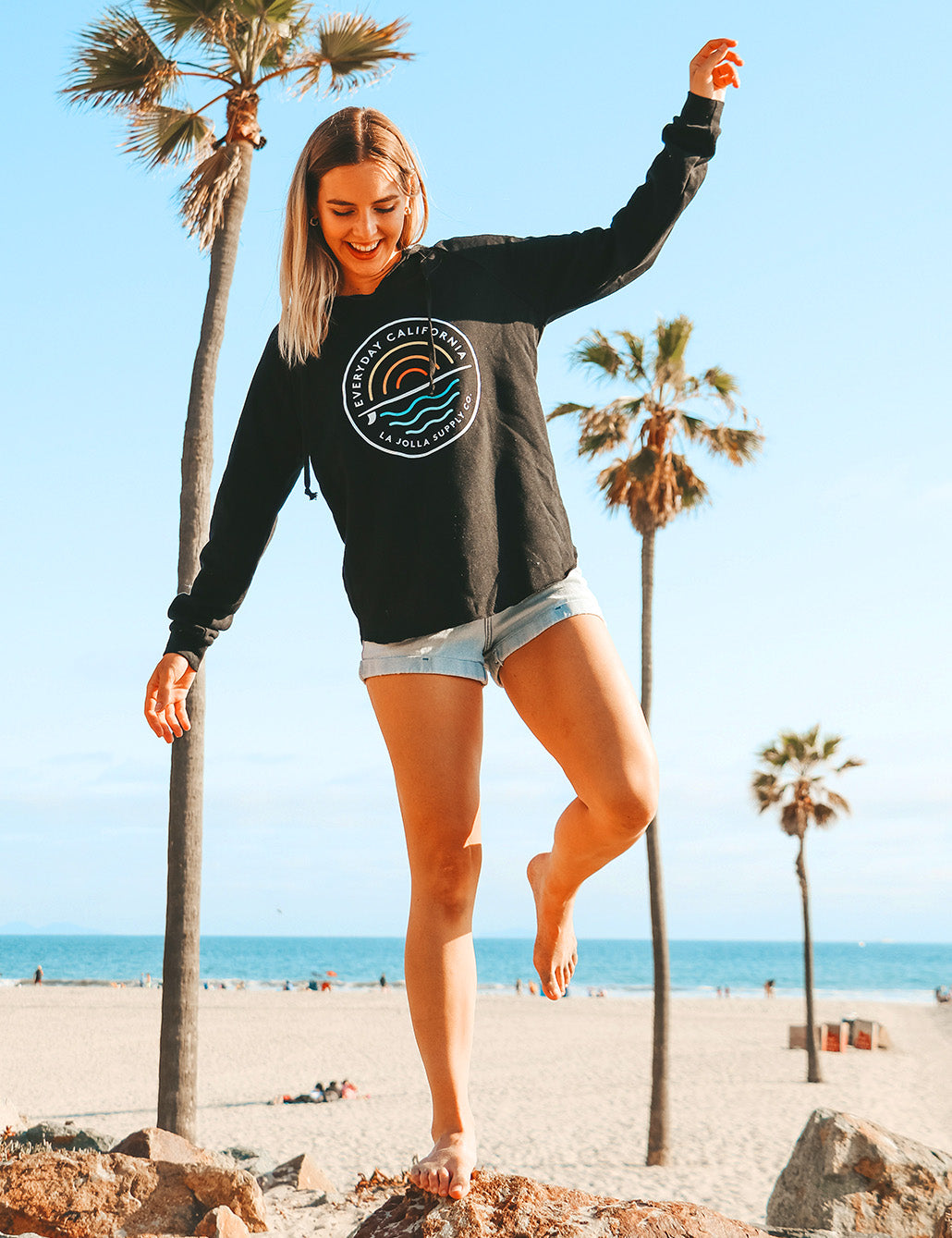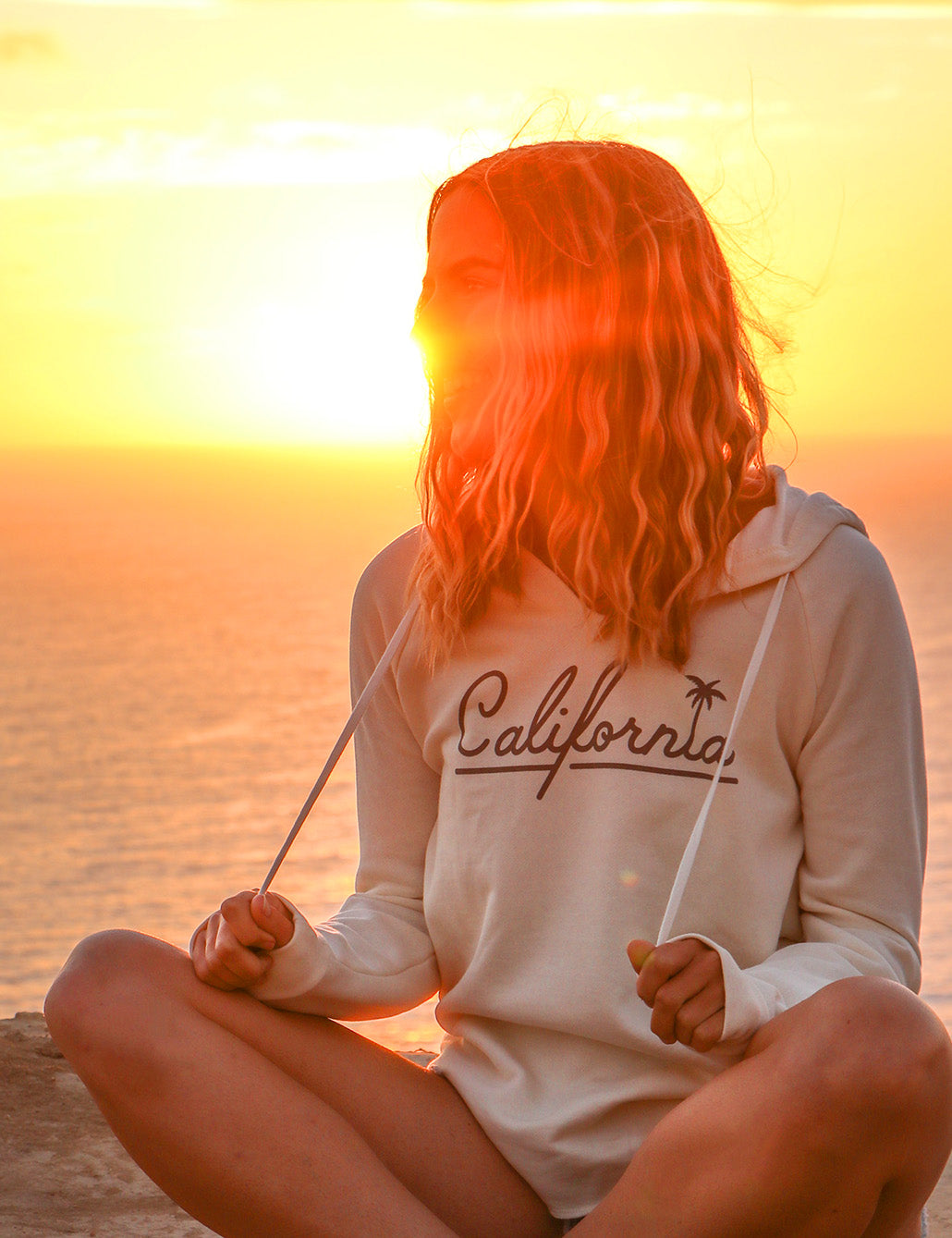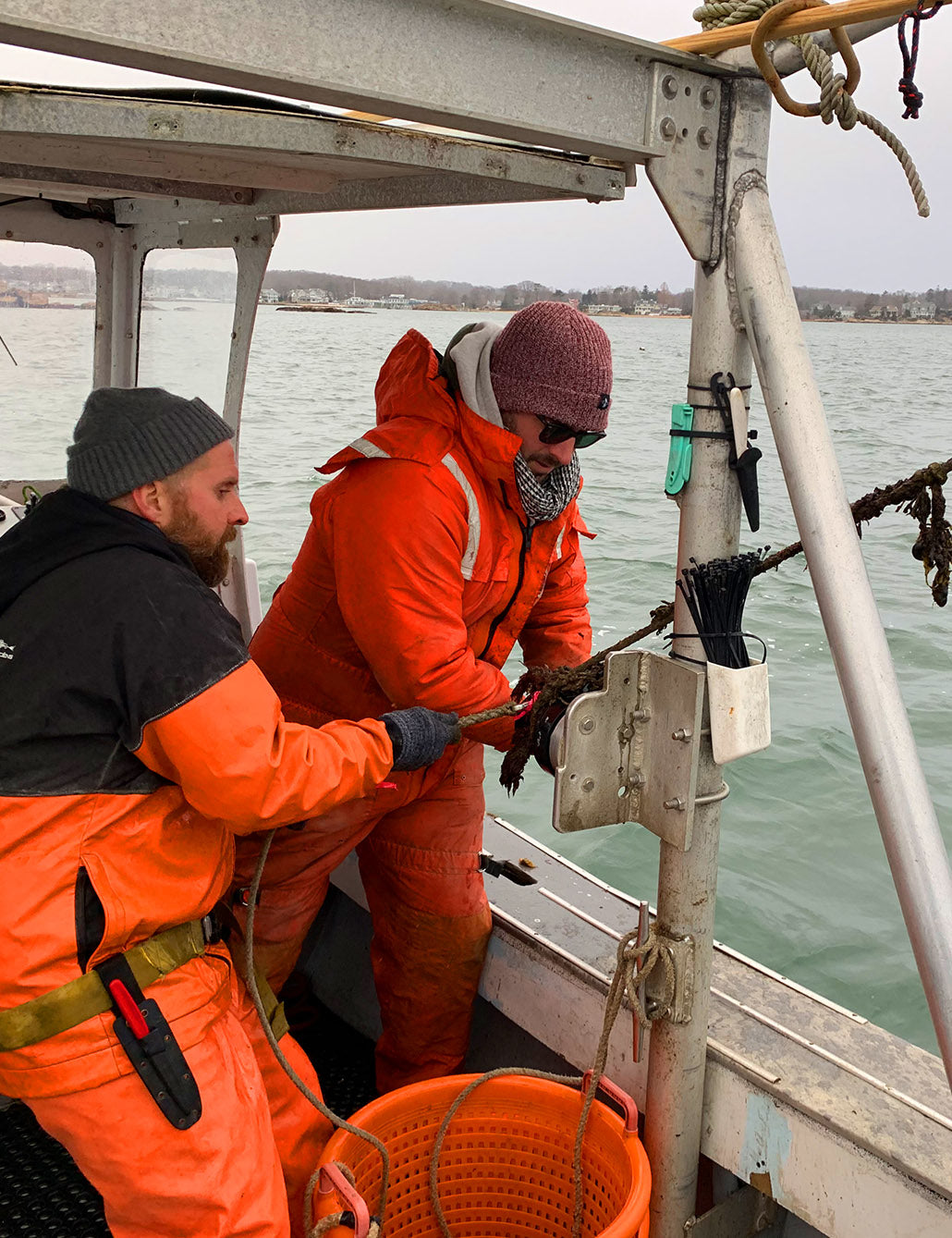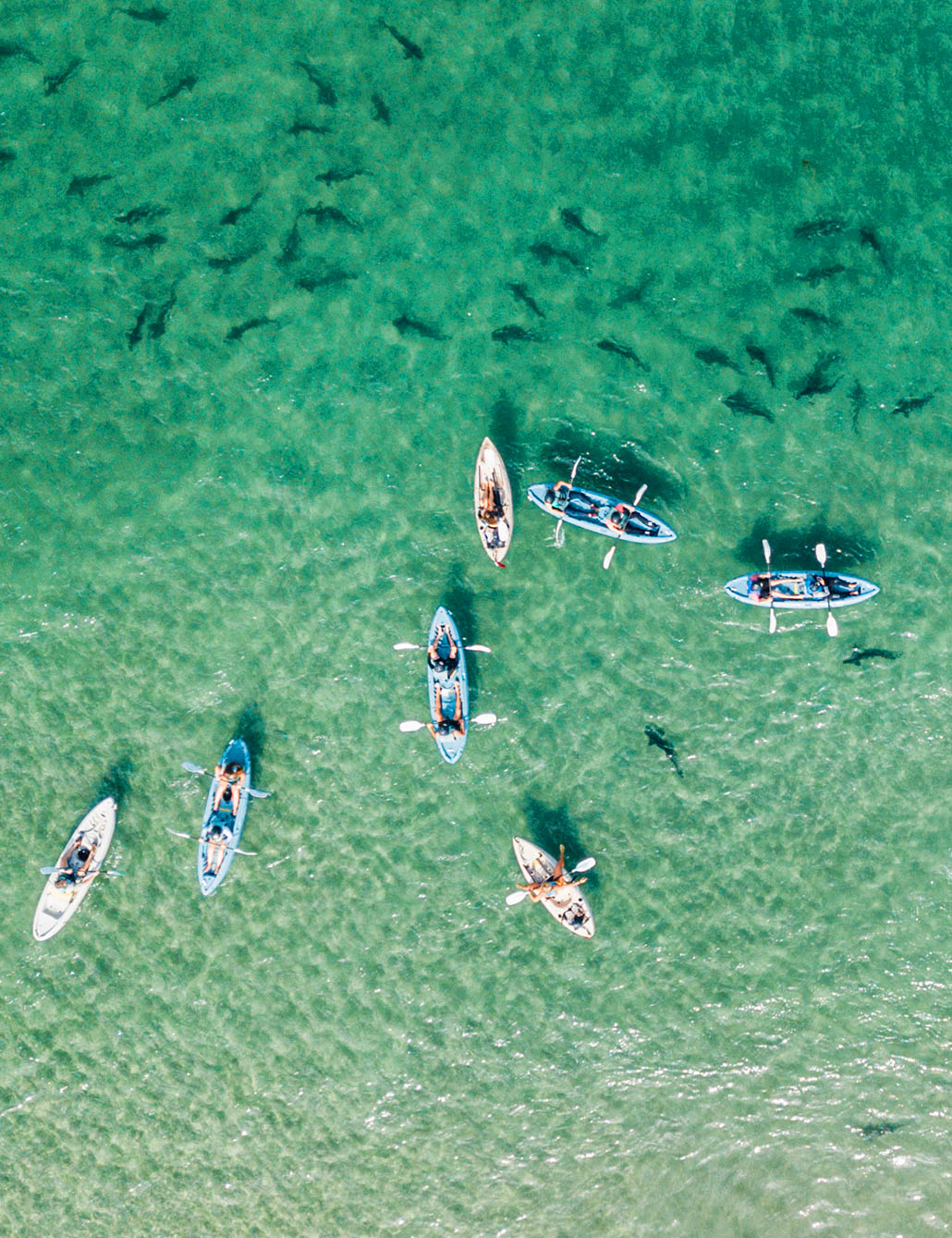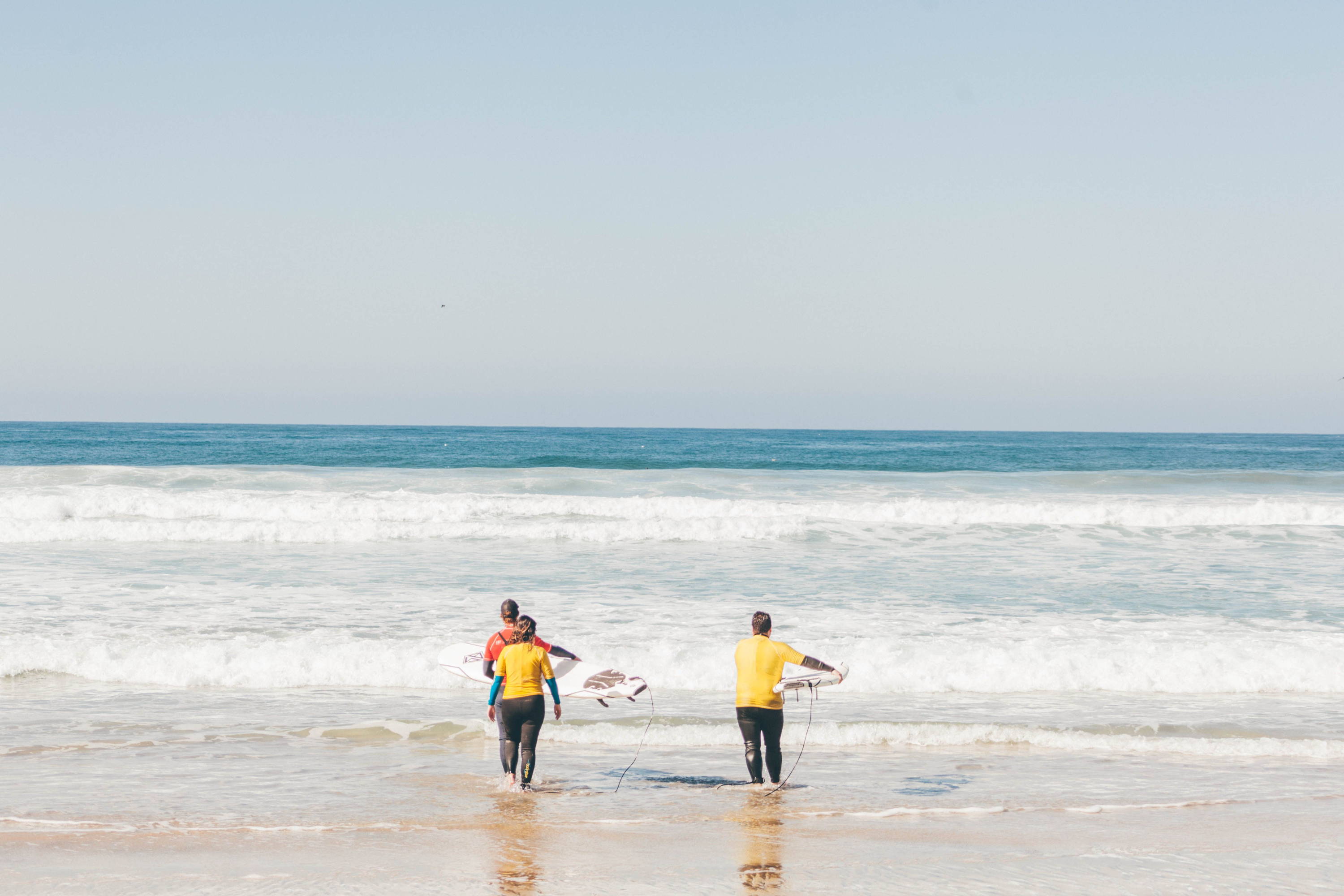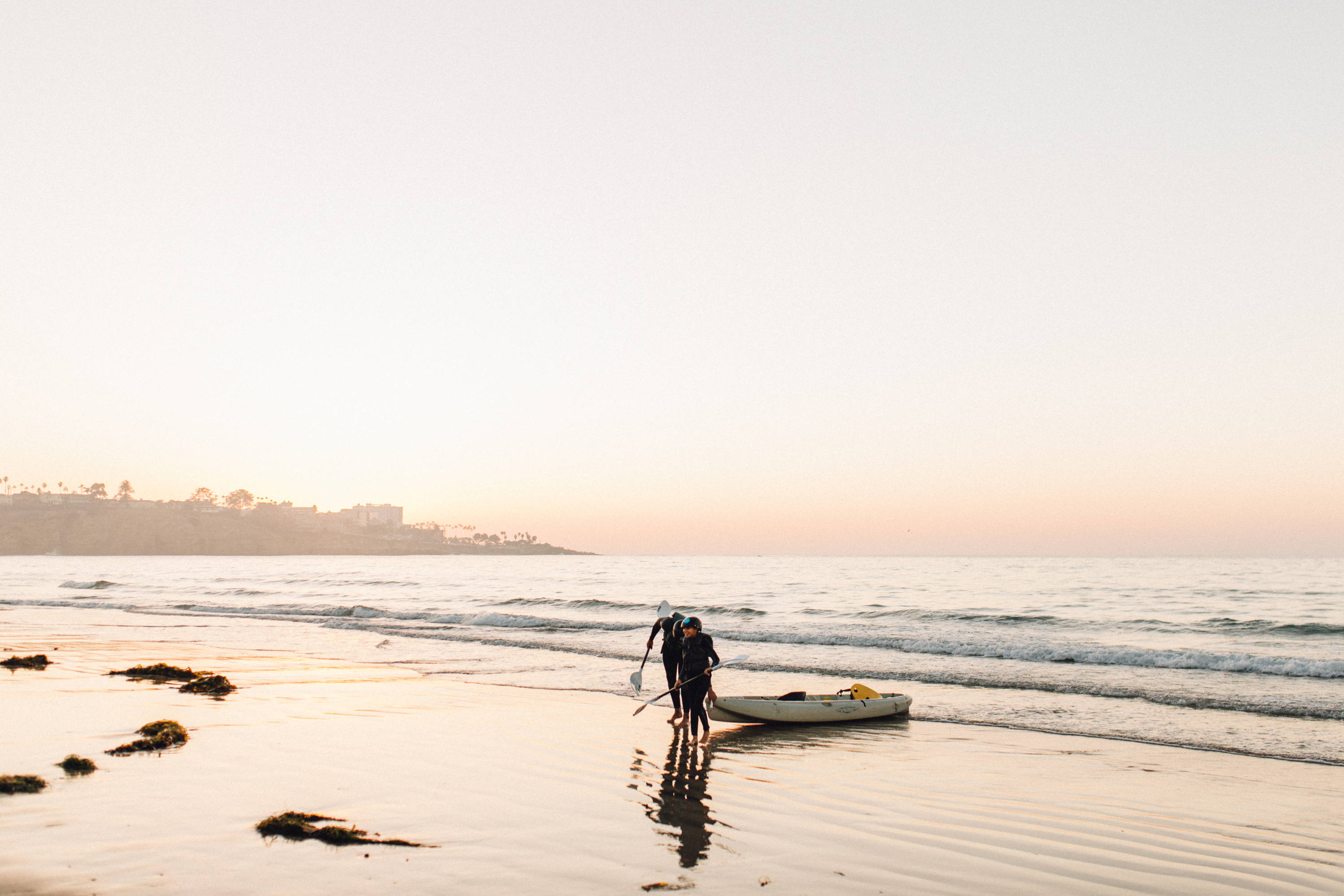By Andrew Iida I Head Writer and parakeet hairdresser
If you’re here, you’re probably getting ready to go on a kayaking trip. That’s awesome! Kayaking is a fun, versatile activity that can be appropriate for all ages, experience levels, and fitness levels. Just make sure you have the right gear!

Appropriate Kayak
You know you’ll need a kayak to go kayaking, but it's important to choose the correct type. There are kayaks that excel in flat, calm conditions, kayaks that are perfect for the ocean, and kayaks that are designed for specific activities like whitewater kayaking and kayak surfing. If you take an ocean touring kayak onto a river with class IV rapids, you’re going to have a bad time.
Check out this blog post for an overview of the different types of kayaks and our recommendations for your first purchase. Our tours use Hobie Kona and Ocean Kayak Malibu Two kayaks, which are perfect for the small waves and gentle currents in La Jolla.
Paddle
There are as many types of paddles as kayaks. Your paddle can be a straight shaft, bent shaft, high angle, low angle, matched, feathered—there are lots of options. In general, whatever paddles come with your kayak are just fine to start out with, and you can always upgrade later.
Personal Floatation Device (PFD)
You should consider a life vest to be an essential item for kayaking, and wear one whenever you’re on the water in any kind of boat.
The U.S. Coast Guard designates 5 types of PFDs, and most people in a kayak will wear a Type III PFD. These are comfortable and not too bulky, offering good freedom of movement for kayaking.
Vests can be either standard PFDs, which are filled with buoyant foam, or inflatable. We recommend a standard PFD instead of one that needs to be inflated because there could be a situation where you’re not able to inflate the vest quickly enough.
The most important part of choosing a PFD is ensuring that it is the proper size. It should fit snugly, but comfortably, and be buoyant enough to keep you afloat (the weight limits should be printed on the inside of the vest).

No. Not like that.
Helmet (For whitewater and ocean kayaking)
If you’re kayaking in a calm lake or bay, you probably won’t need one. But any time you’re kayaking in fast moving water or waves, you will want a helmet. If your kayak flips over in a wave, it might push the boat into your head at 10+ miles per hour, and you’ll be glad you were wearing one.
Bilge Pump or Bailing Sponge
At Everyday California, we use self-draining sit-on-top kayaks. When water gets into the cockpit, it drains out of the scupper holes on the bottom. If you’re using a kayak without scuppers, you will need a way to get rid of water if your boat starts to fill up (too much water and your boat can sink).
The simplest way to get rid of water is with a bailing sponge to soak up the water and wring it out outside of the boat. If you have the space for it, a more efficient tool is a bilge pump, which can be hand or battery powered.

No. Not like that.
Emergency Signaling Equipment
If you need assistance on the water, you should at least be familiar with the distress signal: holding your paddle straight up and waving it above your head. Depending on your location and trip duration, you might want to bring some other emergency gear. Common signaling devices include whistles, strobe lights, flares, rescue beacons, and radios. If you are ever going to be kayaking where you are out of sight of other people, you will need some way to signal for help.
First Aid Kit
It’s a good idea to bring a small, waterproof first aid kit for minor scrapes and strains, especially for kayak fishing and whitewater kayaking.
A copy of your plan with a friend
If you are kayaking on your own, it is essential that you tell a friend what you’re doing, where you’re going, and your estimated timeline so that if something goes wrong, they’ll be able to tell a rescue team where to look. Write down their phone number and stick it in your dry bag so that you can call them after your trip if your phone is damaged or runs out of power.
Sunscreen
Forgetting sunscreen on a kayak is a mistake that people usually don’t make more than once. I know I won’t (my skin was peeling for 3 weeks). When you’re on the water, there’s no shade, so you’ll be in direct sunlight the whole time.
For the healthiest, most environmentally friendly sun protection, you’ll want to look for a reef-safe sunscreen made with non-nano zinc or titanium. Chemical sunscreens are known to be toxic to ocean life, and there are concerns that it’s harmful to humans too.
We think reef-safe sunscreen is so important that we make our own, but any sunscreen is better than no sunscreen.

No. Not like that.
Water
If a plastic water bottle falls into the water, it will slowly degrade and release toxic microplastics that harm the environment and eventually make their way back to humans. We always recommend a metal water bottle or some kind of wearable hydration pack.
Dry Bag
Always expect to get wet on a kayak. Even if you’re paddling in a sit-inside touring kayak with a spray skirt on calm, flat water, there’s always the chance that you’ll flip the boat over and everything will get soaked. A dry bag will ensure that no matter what happens, the water won’t reach its contents.
Some kayaks come with watertight storage containers built into the boat, which means you won’t need a dry bag. If your boat doesn’t have any, you can buy a kit to install one.
Waterproof phone case
For taking pictures and videos, you can’t beat a waterproof action camera (like a GoPro), but if you don’t want to invest that much money, you can always buy a waterproof phone case. The kind we sell at Everyday California are magnetically-sealed pouches that allow you to use your phone like a waterproof, underwater camera. The best thing about these pouches is that they float, so your phone won’t be one of the dozens that divers find on the bottom of the ocean.
Appropriate Attire
What to wear on a kayak depends mostly on personal preference. There’s no special outfit that’s required for kayaking, but it’s best to wear something that would feel comfortable if it gets wet, so we recommend staying away from jeans and 100% cotton clothing.
If it’s a warm day, a swimsuit or athletic gear would be perfect. During the winter months, some areas get cold enough that most people will be wearing wetsuits in their kayaks. In San Diego, it almost never gets cold enough that you would need anything thicker than a 3/2mm full suit.
Hat
This is going to be your only shade on the water, so a lot of people will wear something with a wide brim and a neck cape for lots of sun protection. For water sports, especially somewhere where there are waves, we recommend something like our floating waterproof snapback so that it won’t sink to the bottom of the ocean.
Sunglasses
The glare from the water is going to reflect a lot of extra sunlight into your eyes. Long term UV exposure in the eyes can lead to cataracts and other conditions, and just like your skin, your eyes can become sunburned. We recommend UV rated sunglasses for the best protection, and if you wear polarized sunglasses, it will help you see past the glare into the water, giving you a big advantage for whale watching and fishing.
If you’re kayaking in the ocean, you will want to invest in a strap for your sunglasses—they’re by far the most common lost item that we find on the bottom of the ocean. We’ve found literally hundreds of them, and lost sunglasses are so common that whenever we need a new pair, we can just go snorkeling near the boat launch.

I don't want to live on this planet anymore.
Seasickness treatments
If you’re prone to seasickness, you should bring something to help with it. If you’re not, it’s still a good idea to have dramamine in your kit (some people find out that they get seasick in the middle of their kayak trip, which is never fun).
If you don’t want to take dramamine, ginger chews can help reduce nausea, especially if you take it at the onset of symptoms. You can also prevent seasickness by having a light, mild meal before you head out, drinking plenty of water the day and morning before kayaking, and avoiding alcohol, tobacco, and caffeine the day of your activity.
And if nothing else is working, jumping out of the boat for a quick dip in the cool water never fails to provide some quick, temporary relief from seasickness.
Snacks
Flavor Blasted Pizza Goldfish. Enough said.
Have any questions about kayaking in La Jolla? Visit our Help Center to learn more.


